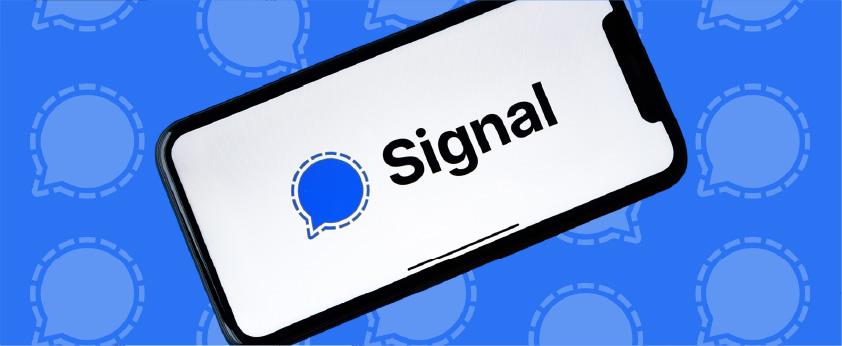
How Signal Evolved from a Hacker Project to Washington’s Go-To Communication App
In the shadow of Edward Snowden’s 2013 revelations about government surveillance, a niche open-source messaging app called Signal began gaining traction among tech-savvy activists and privacy advocates. Fast-forward to 2024, and Signal has become a staple in Washington, D.C.—trusted by lawmakers, journalists, and even parts of the federal government. Its journey from a scrappy hacker project to a tool of choice for U.S. institutions offers a fascinating case study in cybersecurity, privacy, and the evolving relationship between technology and governance.
1. Origins: A Tool Built for Activists
Signal was born in 2013 when Moxie Marlinspike, a cryptography expert and former NSA contractor, launched it as part of the Open Whisper Systems project. Initially designed as a free, open-source alternative to mainstream apps riddled with metadata collection, Signal prioritized end-to-end encryption (E2EE) for voice calls and texts. Its minimalist design and lack of ads or tracking features resonated with activists, journalists, and dissidents in oppressive regimes.
But it wasn’t just radicals who took notice. By 2016, Signal’s code was being audited by cybersecurity experts, and its protocols—like the Double Ratchet algorithm—became industry standards. The app’s reputation for unbreakable security began to spread beyond underground circles.
2. Why Washington Embraced Signal
Washington’s adoption of Signal wasn’t organic—it was driven by necessity. In 2017, the Trump administration’s aggressive use of surveillance tools, including warrants demanding user data from companies like Facebook, spooked lawmakers and staffers. Meanwhile, high-profile leaks (e.g., the FISA court abuses) exposed flaws in traditional communication channels.
Signal’s privacy-first ethos became a lifeline:
● E2EE by default: Unlike WhatsApp (also owned by Meta), Signal encrypts all messages and calls, leaving no exploitable metadata.
● Anonymous sign-ups: Users can register without phone numbers, shielding their identities from prying eyes.
● Open-source code: Independent audits confirmed its security claims, a rarity in Silicon Valley.
By 2020, Signal saw a 4,000% surge in downloads after Trump allies were caught using unsecured apps. Lawmakers on both sides of the aisle, including Senator Ron Wyden (D-Ore.) and Representative Adam Schiff (D-Calif.), began openly endorsing it. Even the U.S. Marshals Service reportedly used Signal for internal communications during sensitive operations.
3. The Government Paradox: A Tool They Can’t Control
Signal’s rise highlights a tension in Washington: The same tool that protects whistleblowers and dissidents is now used by the government itself. But Signal’s refusal to compromise its principles has made it a double-edged sword for policymakers.
For instance, in 2021, the Department of Justice attempted to force Signal to comply with a pen register warrant—a demand for metadata—but the company successfully challenged it in court, citing its E2EE architecture. The case set a precedent, underscoring that Signal’s design inherently thwarts government overreach.
This defiance hasn’t alienated Washington; instead, it’s burnished Signal’s credibility. As Representative Zoe Lofgren (D-Calif.) noted, “If a app can resist even a subpoena, maybe we should all be using it.”
4. Challenges Ahead: Balancing Privacy and Policy
Despite its success, Signal faces hurdles. Critics argue its rigid privacy stance limits functionality compared to rivals like Slack or Zoom. Meanwhile, lawmakers like Senator Lindsey Graham (R-S.C.) have pushed for laws requiring “backdoors” in encrypted apps—a move Signal’s team calls “existentially threatening.”
Yet, Signal’s resilience lies in its community-driven model. It rejects corporate ownership (remaining independent despite offers from Meta and Google) and funds itself through donations, not ads. This independence allows it to resist pressure, even as it expands features like Sealed Sender (hiding who is messaging you) and cross-device backups secured by cryptocurrency-like keys.
The Future of Secure Communication
Signal’s ascent mirrors America’s growing distrust in centralized power. What began as a hacker passion project now symbolizes a broader cultural shift toward prioritizing privacy—even if it means government agencies using the same tools as activists.
As tech historian Langdon Winner once said, “Tools define the terms of power.” In Washington, Signal has rewritten those terms, proving that secure communication isn’t just for rebels—it’s a necessity for democracy itself. Whether this balance holds will shape not just apps, but the future of governance.
Top download














